Lust - Wikipedia
This article is about the carnal desire.

Detail: Luxuria (Lust), in The Seven Deadly Sins and the Four Last Things, by Hieronymus Bosch
Part of a series on
Emotions
Affection
Anger
Angst
Anguish
Annoyance
Anticipation
Anxiety
Apathy
Arousal
Awe
Boredom
Confidence
Contempt
Contentment
Courage
Curiosity
Depression
Desire
Despair
Disappointment
Disgust
Distrust
Ecstasy
Embarrassment
Empathy
Enthusiasm
Envy
Euphoria
Fear
Frustration
Gratitude
Grief
Guilt
Happiness
Hatred
Hope
Horror
Hostility
Humiliation
Interest
Jealousy
Joy
Loneliness
Love
Lust
Outrage
Panic
Passion
Pity
Pleasure
Pride
Rage
Regret
Rejection
Remorse
Resentment
Sadness
Saudade
Schadenfreude
Self-confidence
Shame
Shock
Shyness
Sorrow
Suffering
Surprise
Trust
Wonder
Worry
Lust is a craving, it can take any form such as the lust for sexuality, lust for money or the lust for power. It can take such mundane forms as the lust for food as distinct from the need for food. Lust is a psychological force producing intense wanting for an object, or circumstance fulfilling the emotion.[1]
Contents [hide]
1In religion
1.1Buddhism
1.2Christianity
1.2.1New Testament
1.2.2Catholicism
1.3Hinduism
1.3.1Brahma Kumaris
1.4Islam
1.5Judaism
1.6Paganism
1.7Sikhism
1.8Meher Baba's teachings
2In culture
2.1Medieval prostitutes
3In art
3.1Literature
4In philosophy
4.1Schopenhauer
4.2St. Thomas Aquinas
5Contemporary spiritual perspective
6In psychoanalysis and psychology
7See also
8References
9Further reading
10External links
===
In religion
Religions, especially Christianity, separate the definition of passion and lust by further categorizing lust as an inappropriate desire or a desire that is inappropriately strong, therefore being morally wrong, while passion for proper purposes is maintained as something God-given and moral.
----
1.1] Buddhism[edit]
Main article: tanha
Lust holds a critical position in the philosophical underpinnings of Buddhist reality. It is named in the second of the Four Noble Truths, which are that
Suffering (dukkha) is inherent in all life.
Suffering is caused by lust.
There is a natural way to eliminate all suffering from one's life.
The Noble Eightfold Path is that way.
Lust is the, attachment to, identification with, and passionate desire for certain things in existence, all of which relate to the form, sensation, perception, mentality, and consciousness that certain combinations of these things engender within us. Lust is thus the ultimate cause of general imperfection and the most immediate root cause of a certain suffering.
The passionate desire for either non-existence or for freedom from lust is a common misunderstanding. For example, the headlong pursuit of lust (or other "deadly sin") in order to fulfill a desire for death is followed by a reincarnation accompanied by a self-fulfilling karma, resulting in an endless wheel of life, until the right way to live, the right worldview, is somehow discovered and practiced. Beholding an endless knot puts one, symbolically, in the position of the one with the right worldview, representing that person who attains freedom from lust.
In existence are four kinds of things that engender the clinging: rituals, worldviews, pleasures, and the self. The way to eliminate lust is to learn of its unintended effects and to pursue righteousness as concerns a worldview, intention, speech, behavior, livelihood, effort, mindfulness, and concentration, in the place where lust formerly sat.

Detail of Lustat the Sankt Bartholomäuschurch (Reichenthal), Pulpit (1894)
1.2] Christianity[edit]
New Testament[edit]
In many translations of the New Testament, the word "lust" translates the Greek word ἐπιθυμέω, particularly in Matthew 5:27-28:
Ye have heard that it was said by them of old time, Thou shalt not commit adultery: But I say unto you, That whosoever looketh on a woman to lust (ἐπιθυμέω) after her hath committed adultery with her already in his heart.
In English-speaking countries, the term "lust" is often associated with sexual desire, probably because of this verse. But just as the English word was originally a general term for desire, the Greek word ἐπιθυμέω was also a general term for desire. The LSJlexicon suggests "set one's heart upon a thing, long for, covet, desire" as glosses for ἐπιθυμέω, which is used in verses that clearly have nothing to do with sexual desire. In the Septuagint, ἐπιθυμέω is the word used in the commandment to not covet:
You shall not covet your neighbor's wife; you shall not covet your neighbor's house or his field or his male slave or his female slave or his ox or his draft animal or any animal of his or whatever belongs to your neighbor.
— Exodus 20:17, New English Translation of the Septuagint
While coveting your neighbor's wife may involve sexual desire, it's unlikely that coveting a neighbor's house or field is sexual in nature. And in most New Testament uses, the same Greek word, ἐπιθυμέω, does not have a clear sexual connotation. For example, from the American Standard Version the same word is used outside of any sexual connotation:
Matthew 13:17: For verily I say unto you, that many prophets and righteous men desired to see the things which ye see, and saw them not; and to hear the things which ye hear, and heard them not.
Luke 22:15-16: And he said unto them, With desire I have desired to eat this passover with you before I suffer: for I say unto you, I shall not eat it, until it be fulfilled in the kingdom of God.
Acts 20:33: I coveted no man's silver, or gold, or apparel. Ye yourselves know that these hands ministered unto my necessities, and to them that were with me.
Luke 15:14-16: And when [the prodigal son] had spent all, there arose a mighty famine in that country; and he began to be in want. And he went and joined himself to one of the citizens of that country; and he sent him into his fields to feed swine. And he would fain have filled his belly with the husks that the swine did eat: and no man gave unto him.
Catholicism[edit]

A demon satiating his lust in a 13th-century manuscript

Romanesque capitalrepresenting lust
According to the Catholic Encyclopedia, a Christian's heart is lustful when "venereal satisfaction is sought for either outside wedlock or, at any rate, in a manner which is contrary to the laws that govern marital intercourse".[2] Pope John Paul II said that lust devalues the eternal attraction of male and female, reducing personal riches of the opposite sex to an object for gratification of sexuality.[3]
Lust is considered by Catholicism to be a disordered desire for sexual pleasure, where sexual pleasure is "sought for itself, isolated from its procreative and unitive purposes".[4] In Catholicism, sexual desire in itself is good, and is considered part of God's plan for humanity. However, when sexual desire is separated from God's love, it becomes disordered and self-seeking. This is seen as lust.
The Latin for extravagance (Latin: luxuria) was used by St Jerome to translate a variety of biblical sins, including drunkenness and sexual excess.[5] Gregory the Greatplaced luxuria as one of the seven capital sins (it is often considered the least serious of the seven deadly sins), narrowing its scope to disordered desire,[6] and it was in this sense that the Middle Ages generally took luxuria, (although the Old Frenchcognate was adopted into English as luxury without its sexual meaning by the 14th century[citation needed]).
In Romanesque art, the personified Luxuria is generally feminine,[7] often represented by a siren or a naked woman with breasts being bitten by snakes. Prudentius in his Psychomachia or Battle of the Soul had described[8]
Luxury, lavish of her ruined fame, Loose-haired, wild-eyed, her voice a dying fall, Lost in delight....
For Dante, Luxuria was both the first of the circles of incontinence (or self-indulgence) on the descent into hell, and the last of the cornices of Mount Purgatory, representing the excessive (disordered) love of individuals;[9] while for Spenser luxuria was synonymous with the power of desire.[10]
The daughters (by-products) of Luxuria, for Gregory and subsequent Thomism, included mental blindness, self-love, haste and excessive attachment to the present:[11] Marianne Dashwood has been seen as embodying such characteristics for a later age – as a daughter of Luxuria.[12]
1.3] Hinduism[edit]
In the Bhagavad Gita, Lord Krishna, an Avatar of Vishnu, declared in verse 21 that lust is one of the gates to Naraka or hell.
Arjuna said: O descendant of Vrsni, by what is one impelled to sinful acts, even unwillingly, as if engaged by force? Then Krishna said: It is lust only, Arjuna, which is born of contact with the material mode of passion and later transformed into wrath, and which is the all-devouring sinful enemy of this world. As fire is covered by smoke, as a mirror is covered by dust, or as the embryo is covered by the womb, the living entity is similarly covered by different degrees of this lust. Thus the wise living entity's pure consciousness becomes covered by his eternal enemy in the form of lust, which is never satisfied and which burns like fire. The senses, the mind and the intelligence are the sitting places of this lust. Through them lust covers the real knowledge of the living entity and bewilders him. Therefore, O Arjuna, best of the Bharatas, in the very beginning curb this great symbol of sin—(lust) by regulating the senses, and slay this destroyer of knowledgeand self-realization. The working senses are superior to dull matter; mind is higher than the senses; intelligence is still higher than the mind; and he [the soul] is even higher than the intelligence. Thus knowing oneself to be transcendental to the material senses, mind and intelligence, O mighty-armed Arjuna, one should steady the mind by deliberate spiritualintelligence and thus—by spiritual strength—conquer this insatiable enemy known as lust. (Bhagavad-Gita, 3.36–43)
In this ancient manuscript the idea behind the word 'Lust' is best comprehended as the psychological force called 'Wanting'.
Brahma Kumaris[edit]
According to Brahma Kumaris, a spiritual organization which is based on Hindu philosophy, sexual lust is the greatest enemy to all mankind[13] and the gateway to hell.[14]
For this reason followers do not eat onions, garlic, eggs, or non-vegetarian food, as the "sulphur" in them can excite sexual lust in the body, otherwise bound to celibacy.
The physical act of sex is "impure", leading to body-consciousness and other crimes. This impurity "poisons" the body and leads to many kinds of "diseases".
The Brahma Kumaris teach that sexuality is like foraging about in a dark sewer. Students at Spiritual University must conquer lust in order to find the Golden Age, a heaven on earth, where children are conceived by an asexual power of mind, and lasting for 2,500 years in the peace and purity of a holy swan moving on earth, over water, and in air.[15][16]
Islam[edit]
In Islam, intentional lascivious glances are forbidden. Lascivious thoughts are disliked, for they are the first step towards adultery, rape and other antisocial behaviors. Prophet Muhammad also stressed the magnitude of the "second glance", as the first glance towards an attractive member of the opposite sex could be just accidental or observatory, the second glance could be that gate into lustful thinking.[citation needed]Islam does not advocate celibacy but it requires marriage to conduct sex legally.
Judaism[edit]
Main article: Yetzer hara § The evil inclination in Jewish tradition
In Judaism, all evil inclinations and lusts of the flesh are characterized by Yetzer hara(Hebrew, יצר הרע, the evil inclination). Yetzer hara is not a demonic force; rather, it is man's misuse of the things which the physical body needs to survive, and is often contrasted with yetzer hatov (Hebrew, יצר הטוב, the positive desire).
Yetzer HaRa is often identified with Satan and the angel of death,[17] and there is sometimes a tendency to give a personality and separate activity to the yetzer. For the yetzer, like Satan, misleads man in this world, and testifies against him in the world to come. The yetzer is, however, clearly distinguished from Satan, and on other occasions is made exactly parallel to sin. The Torah is considered the great antidote against this force. Though, like all things which God has made, the yetzer hara (evil inclination) can be manipulated into doing good: for without it, man would never marry, beget a child, build a house, or occupy himself in a trade.
Paganism[edit]
Few ancient, pagan religions actually considered lust to be a vice.[citation needed] The most famous example of a widespread religious movement practicing lechery as a ritual is the Bacchanalia of the Ancient Roman Bacchantes. However, this activity was soon outlawed by the Roman Senate in 186 BC in the decree Senatus consultum de Bacchanalibus. The practice of sacred prostitution, however, continued to be an activity practiced often by the Dionysians.
Sikhism[edit]
In Sikhism, lust is counted among the five cardinal sins or sinful propensities, the others being Wrath, ego, greed and attachment. Uncontrollable expression of sexual lust, as in rape or sexual addiction, is an evil.
Meher Baba's teachings[edit]
The spiritual teacher Meher Baba described the differences between lust and love:
In lust there is reliance upon the object of sense and consequent spiritual subordination of the soul to it, but love puts the soul into direct and co-ordinate relation with the reality which is behind the form. Therefore lust is experienced as being heavy and love is experienced as being light. In lust there is a narrowing down of life and in love there is an expansion in being...If you love the whole world you vicariously live in the whole world, but in lust there is an ebbing down of life and a general sense of hopeless dependence upon a form which is regarded as another. Thus, in lust there is the accentuation of separateness and suffering, but in love there is the feeling of unity and joy....[18]
2] In culture[edit]
Medieval prostitutes[edit]
Medieval prostitutes lived officially sanctioned in "red light districts." In Ruth Mazo Karras' book Common Women, she discusses the meaning of prostitution and how people thought the proper use of prostitutes by unmarried men helped contain male lust. Prostitution was thought of as having a beneficial effect by reducing the sexual frustration in the community.[19]
3] In art[edit]
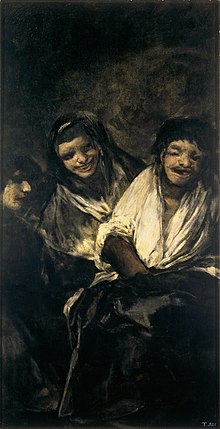
Goya's Man Mocked by Two Women (Dos Mujeres y un hombre), c. 1820
Literature[edit]
From Ovid to the works of les poètes maudits, characters have always been faced with scenes of lechery, and long since has lust been a common motif in world literature. Many writers, such as Georges Bataille, Casanova and Prosper Mérimée, have written works wherein scenes at bordellos and other unseemly locales take place.
Baudelaire, author of Les fleurs du mal, had once remarked, in regard to the artist, that:
“ The more a man cultivates the arts, the less randy he becomes... Only the brute is good at coupling, and copulation is the lyricism of the masses. To copulate is to enter into another—and the artist never emerges from himself. ”
The most notable work to touch upon the sin of lust, and all of the Seven Deadly Sins, is Dante's la Divina Commedia. Dante's criterion for lust was an "excessive love of others," insofar as an excessive love for man would render one's love of God secondary.
In the first canticle of Dante's Inferno, the lustful are punished by being continuously swept around in a whirlwind, which symbolizes their passions. The damned who are guilty of lust, like the two famous lovers, Paolo and Francesca, receive what they desired in their mortal lives, their passions never give them rest for all eternity. In Purgatorio, of the selfsame work, the penitents choose to walk through flames in order to purge themselves of their lustful inclinations.
5] In philosophy[edit]
The link between love and lust has always been a problematic question in philosophy.
Schopenhauer[edit]
Schopenhauer notes the misery which results from sexual relationships. According to him, this directly explains the sentiments of shame and sadness which tend to follow the act of sexual intercourse. For, he states, the only power that reigns is the inextinguishable desire to face, at any price, the blind love present in human existence without any consideration of the outcome. He estimates that a genius of his species is an industrial being who wants only to produce, and wants only to think. The theme of lust for Schopenhauer is thus to consider the horrors which will almost certainly follow the culmination of lust.
St. Thomas Aquinas[edit]
St. Thomas Aquinas defines the sin of Lust in questions 153 and 154 of his Summa Theologica. Aquinas says the sin of lust is of "voluptuous emotions," and makes the point that sexual pleasures, "unloosen the human spirit," and set aside right reason (Pg.191). Aquinas restricts lust's subject matter to physical desires specifically arising from sexual acts, but Aquinas does not assume all sex-acts are sinful. Sex is not a sin in marriage, because sex is the only way for humans to reproduce. If sex is used naturally and the end purpose is reproduction there is no sin. Aquinas says, "if the end be good and if what is done is well-adapted to that, then no sin is present," (Pg.193). However, sex simply for the sake of pleasure is lustful and therefore, a sin. A man who uses his body for lechery wrongs the Lord.
Sex may have the attributes of being sinless; however, when a person seeks sex for pleasure, he or she is sinning with lust. Lust is best defined by its specific attribute of rape, adultery, wet dreams, seduction, unnatural vice, and simple fornication.
Wet dreams: St. Thomas Aquinas defined and discussed the topic of nocturnal emission, which occurs when one dreams of physical pleasure. Aquinas argues those who say that wet dreams are a sin and comparable to the actual experience of sex are wrong. Aquinas believes that such an action is sinless, for a dream is not under a person's control or free judgment. When one has a "nocturnal orgasm," it is not a sin, but it can lead to sins (Pg. 227). Aquinas says that wet dreams come from a physical cause of inappropriate pictures within your imagination, a psychological cause when thinking of sex while you fall asleep and a demonical cause where by demons act upon the sleepers body, "stirring the sleeper's imagination to bring about a orgasm," (Pg. 225). In the end, though, dreaming of lustful acts is not sinful. The "mind's awareness is less hindered," as the sleeper lacks right reason; therefore, a person cannot be accountable for what they dream while sleeping, (Pg. 227).
Adultery: One of the main forms of lust seen frequently during the Middle Ages was the sin of adultery. The sin of adultery occurs when a person is unfaithful to his or her spouse, hence "invading of a bed not one's own," (Pg.235). Adultery is a special kind of ugliness and many difficulties arise from it. When a man enters the bed of a married woman it not only is a sin, but it "wrongs the offspring," because the woman now calls into question the legitimacy of children. (Pg.235). If a wife has committed adultery before, then, her husband will question if all his wife's children are his offspring.
Simple fornication: Simple fornication is having sex with one's wife for enjoyment rather than for bearing children. Fornication is also sex between two unmarried people, which is also a mortal sin. Aquinas says, "fornication is a deadly crime," (Pg.213). Fornication is a mortal sin, but as Aquinas notes, "Pope Gregory treated sins of the flesh as less grievous than those of the spirit" (Pg. 217). Fornication was a grave sin such as that against property. Fornication, however, is not as grave as a sin directly against God and human life; therefore, murder is much worse than fornication. Property in this case means that a daughter is the property of her father, and if you do wrong to her, you then do wrong to him; therefore seducing a virgin or seeking pleasure from an unmarried woman is an invasion of a father's property.
Rape: Rape is a kind of lust that often coincides with seduction and is defined as a type of lechery. Rape comes with force and violence: Rape occurs when a person craves the pleasures of sex so intensely that he uses force to obtain it. Rape is committed when violence is used to seduce, or deflower a virgin. Rape harms both the unmarried girl and her father, because the girl is property of her father. Rape and seduction can be discussed together, because both sins involve the deflowering of a virgin; however, rape can happen without seduction, as when a man attacks a widow or a sexually experienced woman and violates her. Therefore, wherever violence accompanies sex, you have the quality of rape and the sin of lust.
Seduction: Seduction is a type of lust, because seduction is a sex act, which ravishes a virgin. Lust is a sin of sexual activity, and, "…a special quality of wrong that appears if a maid still under her father's care is debauched" (Pg.229). Seduction involves a discussion of property, as an unmarried girl is property of her father. A virgin, even though free from the bond of marriage, is not free from the bond of her family. When a virgin is violated without a promise of engagement, she is prevented from having honorable marriage, which is shameful to herself and her family. A man who performs sexual acts with a virgin must "endow her and have her to wife," and if the father, who is responsible for her, says no, then a man must pay a dowry to compensate for her loss of virginity and future chance of marriage. (Pg.229)
Unnatural vice: Unnatural vice is the worst kind of lust because it is unnatural in act and purpose. Unnatural vice happens variously, but Aquinas provides several examples including bestiality or intercourse with a "thing of another species," for example animals. Aquinas said, "bestiality goes beyond the bands of humanity" and is therefore, unnatural.
6] Contemporary spiritual perspective[edit]
Barry Long states that lusting is simply thinking or fantasising about an imagined sexual scene and private parts of the body. The action of thinking or fantasising stirs the natural, pure sexual energy into a coarser, more degraded emotional form (lust).[20][21][22] Long encourages lovemaking as the practice of converting sexual energy into the knowledge of love: "You don’t need a celibate body, you need a celibate mind".[23]
7] n psychoanalysis and psychology[edit]
Main article: libido
Lust, in the domain of psychoanalysis and psychology, is often treated as a case of "heightened libido".
A person is more likely to lust after someone who does not resemble themself. Self-relatedness is a cue of kinship and causes an instinctual reaction to not be attracted. Therefore, self-resemblance decreases attractiveness and sexual desire in a person, while less resemblance increases attractiveness and sexual desire, creating a higher possibility of lust.[24]
See also[edit]
Concupiscence
Fornication
Kam
Kama
Libido
Love
Masturbation
Matthew 5:27–28
Religious views on masturbation
Religious views on pornography
Sexual attraction
Tanha
References[edit]
Jump up^ Richard Lazarus with Bernice N Lazarus, Passion and Reason: Making Sense of Our Emotions, 1994, New York: Oxford University Press ISBN 978-0-19-510461-5
Jump up^
 Herbermann, Charles, ed. (1913). "Lust". Catholic Encyclopedia. New York: Robert Appleton Company.
Herbermann, Charles, ed. (1913). "Lust". Catholic Encyclopedia. New York: Robert Appleton Company.Jump up^ Pope John Paul II, Mutual Attraction Differs from Lust.L'Osservatore Romano, Weekly Edition in English, 22 September 1980, p. 11. Available at http://www.ewtn.com/library/papaldoc/jp2tb39.htm .
Jump up^ 'Catechism of the Catholic Church, n° 2351 sq.
Jump up^ Mark D. Jordan, The Invention of Sodomy (1994) p. 37
Jump up^ Mark D. Jordan, The Invention of Sodomy (1994) p. 39-40; Julien Théry, "Luxure cléricale, gouvernement de l’Église et royauté capétienne au temps de la 'Bible de saint Louis'", Revue Mabillon, 25, 2014, p. 165-194
Jump up^ J. Jerman/A. Weir, Images of Lust (2013) p. 30
Jump up^ Helen Waddell, The Wandering Scholars (1968) p. 48
Jump up^ Dante, Hell' (1975) p. 101; Dante, Purgatory (1971) p. 67 and p. 202
Jump up^ C. J. Berry, The Idea of Luxury (1994) p. 97-8
Jump up^ Mark D. Jordan, The Invention of Sodomy (1994) p. 37-9
Jump up^ Robert Liddell, The Novels of Jane Austen (London 1963) p. 22
Jump up^ Through open doors: a view of Asian cultures in Kenya. Cynthia Salvadori, Andrew Fedders, 1989
Jump up^ Exploring New Religions. p. 196, George D. Chryssides, 1999
Jump up^ Peace & purity: the story of the Brahma Kumaris : a spiritual revolution By Liz Hodgkinson
Jump up^ A history of celibacy, p. 172. Elizabeth Abbott, 2001
Jump up^ Bava Bathra. pp. 16a.
Jump up^ Baba, Meher (1967). Discourses. Volume I. San Francisco: Sufism Reoriented. pp. 159–160. ISBN 978-1880619094.
Jump up^ Karras, Ruth Mazo. Common Women: Prostitution and Sexuality in Medieval England. New York: Oxford UP, 1996. Print.
Jump up^ "Barry Long Foundation International". Barrylong.org. Retrieved 2011-11-21.
Jump up^ 'MAKING LOVE Sexual Love the Divine Way' Barry Long, Book ISBN 978-1-899324-14-9
Jump up^ Barry Long, Gold Coast Talks audio, February 1997
Jump up^ Gold Coast Talks audio April 1998
Jump up^ Debruine, L. M. (2005). "Trustworthy but not lust-worthy: Context-specific effects of facial resemblance". Proceedings of the Royal Society B: Biological Sciences. 272(1566): 919–22. doi:10.1098/rspb.2004.3003. PMC 1564091
 . PMID 16024346.
. PMID 16024346.Further reading[edit]
Froböse, Gabriele, Rolf Froböse, and Michael Gross (translator). Lust and Love: Is it more than Chemistry? Royal Society of Chemistry, 2006. ISBN 0-85404-867-7.
-------------
External links[edit]
 Wikimedia Commons has media related to Lust.
Wikimedia Commons has media related to Lust. Wikiquote has quotations related to: Lust
Wikiquote has quotations related to: Lust The dictionary definition of lust at Wiktionary
The dictionary definition of lust at Wiktionary"The Seven Deadly Sins: Lust" National Public Radio feature
"A New Look at Lust: The Secular View"
The Catholic Encyclopedia: Lust
Catechism of the Catholic Church: The Sixth Commandment
The Jewish Encyclopedia: Yeẓer ha-Ra
show
v
t
e
Emotions (list)
show
v
t
e
Seven deadly sins
show
v
t
e
Seven virtues in Christian ethics
show
v
t
e
Hamartiology
Authority control
NDL: 00570471

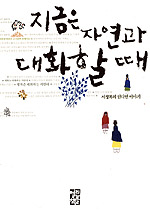
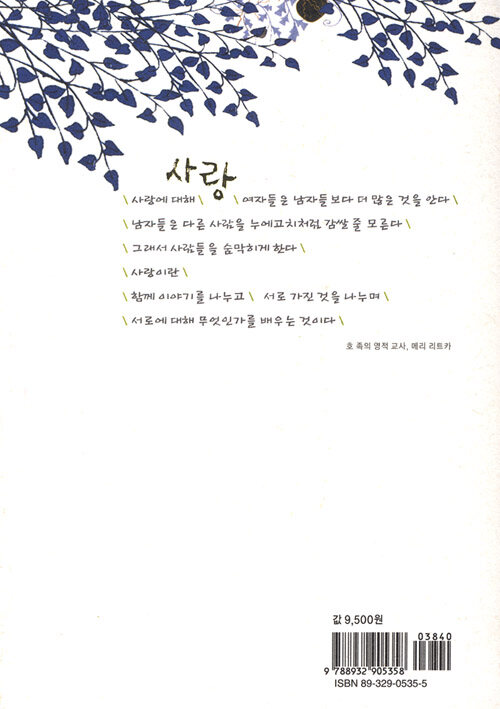







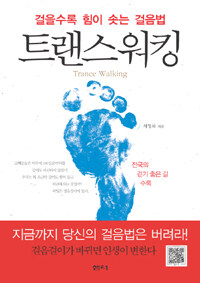
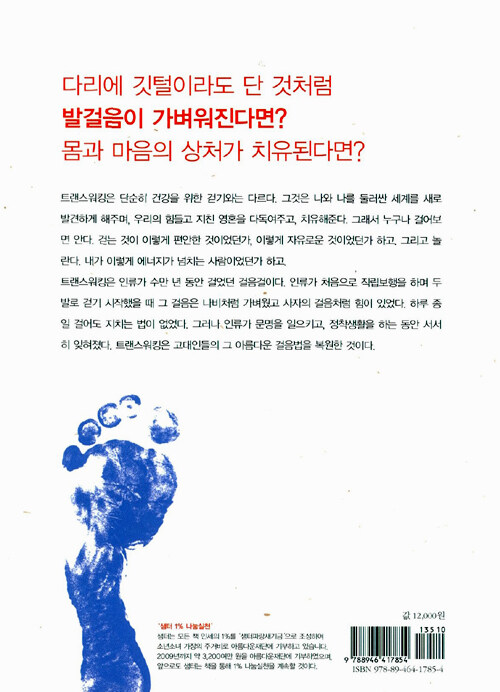


 최근작 :
최근작 : 

 총 : 5편
총 : 5편 

 걸을수록 힘이 생겨요
걸을수록 힘이 생겨요 



 건강의 지름길인 트랜스워킹
건강의 지름길인 트랜스워킹 















